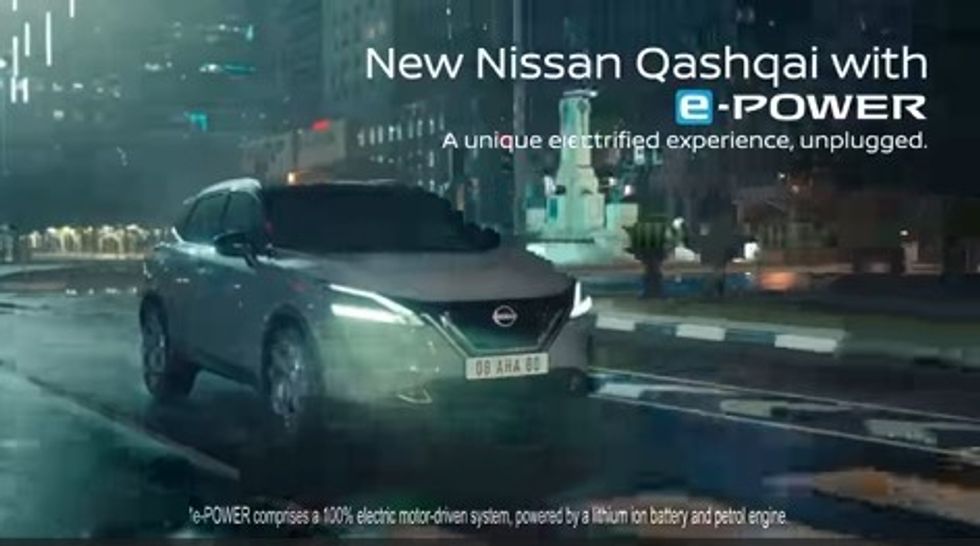Two adverts for the hybrid vehicles have been banned
NISSAN
One of the banned adverts showed the superhero The Flash appear near the cars
Don't Miss
Most Read
Trending on GB News
Two adverts for a Nissan hybrid vehicle have been banned from appearing on TV after failing to make sufficiently clear the extent of what powered the vehicle.
The Advertising Standards Authority (ASA) received four complaints about one advert which appeared on screens in May and September and another which appeared in June.
The first advert stated that "e-Power" technology “comprises a 100 per cent electric motor-driven system, powered by a lithium-ion battery and a petrol engine.”
It shows a Nissan Qashqai hybrid driving through a city with a spark of electricity following the car, with a voiceover that said: “Who said electrification can’t spark excitement when unplugged?”
WATCH NOW: Kwasi Kwarteng visits Nissan EV plant in Sunderland
The second advert saw the superhero The Flash sprinting between two Nissan vehicles with a trail of sparks behind him.
A voiceover of the advert stated: “Nissan Qashqai and X-Trail with e-Power. Get your own electrical superpower like The Flash.”
Nissan claimed it had clearly shown the vehicle was part of its “e-Power” range which was neither hybrid nor fully electric.
Instead, it uses a petrol engine and lithium-ion battery to power an electric motor which was the single source of power to turn the wheels.
This was different from conventional hybrid vehicles where the wheels are powered by a petrol engine, electric motor, or a combination of both.
The Advertising Standards Authority (ASA) claimed that viewers would assume “e-Power” meant it was being powered by a new technology and wouldn’t need to be plugged in like a normal EV.
The original advert did not include any information about its environmental benefits or credentials, with the ASA arguing that customers would infer that the Qashqai was a better choice than petrol and diesel vehicles.
The verdict from the advertising watchdog stated: “However, because the ads did not make sufficiently clear the nature of the vehicle’s power source and because it required petrol to power the electric motor, which would produce tailpipe emissions, we considered that the ads were also misleading in this regard.
“We concluded that the ads did not make sufficiently clear the extent to which the car required petrol and were therefore misleading.”
Nissan confirmed that the ads will no longer be broadcast in their current form and will clarify that the vehicle is not fully electric and requires petrol in future adverts.
The ASA ruled that the ads must not appear in the current form and Nissan must ensure future adverts make “sufficiently clear” the nature of a vehicle’s power source.
A spokesperson for Nissan said: “We are disappointed with the ruling made by the ASA although of course we will respect their decision.
“We remain fully committed to helping our customers understand the different technologies available to them, including hybrid, e-Power and full electric.
“e-Power uses a petrol engine and a lithium-ion battery to power an electric motor.
LATEST DEVELOPMENTS:

The ASA claimed customers would assume that the car functioned differently to a normal electric vehicle
ASA/PA
“The electric motor alone drives the wheels, providing a uniquely exciting technology that brings customers who are not quite ready for a fully electric vehicle as close to the excitement of EV driving as possible.”








